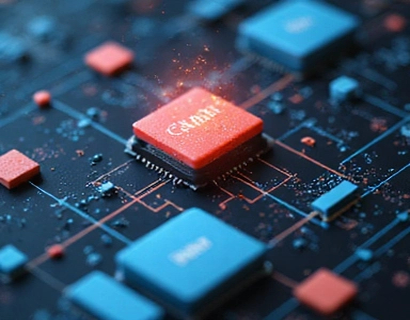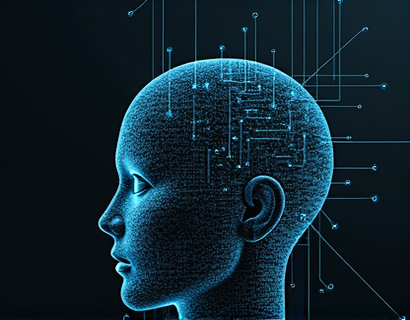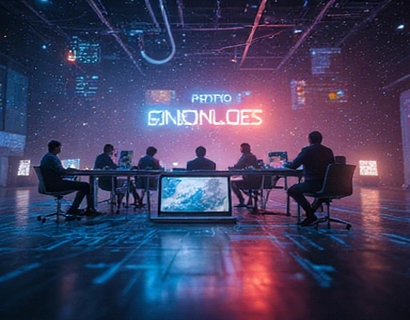AI-Powered Cosmic Learning: Interactive Exploration with Customizable Settings for Educators and Space Enthusiasts
In an age where technology is rapidly transforming education, the integration of artificial intelligence (AI) into learning tools has opened up new avenues for exploration and understanding. One of the most exciting applications of AI in education is in the field of astronomy and space science. With the advent of AI-powered learning tools, educators and space enthusiasts can embark on a cosmic adventure that is not only informative but also highly engaging. This article delves into the concept of AI-powered cosmic learning, highlighting its interactive features, customizable settings, and the benefits it offers to both educators and learners.
The Importance of Space Education
Space education plays a crucial role in fostering curiosity and understanding of the universe. As humanity continues to explore the cosmos, it becomes increasingly important for individuals to grasp fundamental astronomical concepts. Understanding the universe not only satisfies human curiosity but also inspires future generations to pursue careers in science, technology, engineering, and mathematics (STEM). However, traditional methods of teaching astronomy can often be limited in scope and engagement. This is where AI-powered learning tools come into play, providing a dynamic and interactive approach to space education.
What is AI-Powered Cosmic Learning?
AI-powered cosmic learning refers to the use of artificial intelligence to create interactive and personalized learning experiences focused on space and astronomy. These tools leverage advanced algorithms to adapt to the individual needs and preferences of users, making learning more accessible and enjoyable. By incorporating interactive elements such as simulations, visualizations, and real-time data, AI-powered learning tools allow users to explore celestial phenomena and astronomical concepts in a way that traditional textbooks cannot.
Key Features of AI-Powered Learning Tools
1. Interactive Exploration
One of the standout features of AI-powered cosmic learning tools is their ability to facilitate interactive exploration. Users can engage with 3D models of celestial bodies, simulate space missions, and visualize astronomical events. This hands-on approach not only enhances understanding but also makes learning more enjoyable. For instance, users can manipulate the orbits of planets, observe the effects of gravity, and even simulate the conditions of different celestial environments.
2. Customizable Settings
Another significant advantage of AI-powered learning tools is the ability to customize settings according to individual preferences. Educators can tailor the learning experience to suit the needs of their students, adjusting difficulty levels, content focus, and even the pace of learning. This personalization ensures that learners remain engaged and can progress at their own speed, making it an ideal solution for diverse classrooms.
3. Real-Time Data Integration
AI-powered tools can integrate real-time data from various astronomical sources, allowing users to stay updated with the latest discoveries and events in the universe. This feature not only enriches the learning experience but also encourages users to connect with current scientific research and developments. For example, learners can track the movements of planets, observe live feeds from telescopes, and even participate in citizen science projects that contribute to ongoing research.
4. Interactive AI Chat Agents
Many AI-powered learning tools include interactive chat agents that serve as personalized guides for users. These chat agents can answer questions, provide explanations, and offer additional resources based on user inquiries. This interactive element fosters a sense of curiosity and encourages learners to explore topics in greater depth. By engaging in conversations with the AI, users can clarify doubts and gain insights that enhance their understanding of complex astronomical concepts.
Benefits for Educators
AI-powered cosmic learning tools offer numerous benefits for educators looking to enhance their teaching methods. Here are some key advantages:
- Enhanced Engagement: The interactive nature of AI-powered tools captures students' attention and keeps them engaged in the learning process.
- Differentiated Instruction: Customizable settings allow educators to tailor lessons to meet the diverse needs of their students, ensuring that everyone can learn at their own pace.
- Access to Current Information: Real-time data integration keeps educators and students informed about the latest developments in astronomy, making lessons more relevant and exciting.
- Support for STEM Education: By incorporating AI-powered tools into the curriculum, educators can inspire students to pursue careers in STEM fields, fostering a new generation of scientists and engineers.
Benefits for Space Enthusiasts
For space enthusiasts, AI-powered cosmic learning tools provide an exciting platform for exploration and discovery. Here are some benefits for individuals passionate about space:
- Personalized Learning Experience: Space enthusiasts can customize their learning journey, focusing on topics that interest them the most, whether it's planetary science, astrophysics, or cosmology.
- Interactive Learning: The ability to engage with simulations and visualizations makes learning about complex astronomical concepts more accessible and enjoyable.
- Community Engagement: Many AI-powered tools foster a sense of community among users, allowing space enthusiasts to connect, share insights, and collaborate on projects.
- Continuous Learning: With access to real-time data and updates, space enthusiasts can stay informed about the latest discoveries and advancements in the field.
Applications in the Classroom
Integrating AI-powered cosmic learning tools into the classroom can transform the way astronomy is taught. Here are some practical applications:
1. Interactive Lessons
Educators can use AI-powered tools to create interactive lessons that allow students to explore celestial phenomena in real-time. For example, a lesson on the solar system could involve students manipulating the orbits of planets and observing the effects of gravitational forces.
2. Virtual Field Trips
AI-powered tools can facilitate virtual field trips to space observatories, planetariums, and even distant celestial bodies. Students can experience the wonders of the universe without leaving the classroom, making learning more immersive.
3. Collaborative Projects
Educators can assign collaborative projects that encourage students to work together using AI-powered tools. For instance, students could analyze data from a recent astronomical event and present their findings to the class.
4. Assessment and Feedback
AI-powered tools can provide instant feedback on student performance, allowing educators to assess understanding and adjust instruction accordingly. This data-driven approach enhances the learning experience and helps identify areas for improvement.
Challenges and Considerations
While AI-powered cosmic learning tools offer numerous benefits, there are also challenges and considerations to keep in mind:
- Access to Technology: Not all students may have access to the necessary technology to utilize AI-powered tools, creating potential disparities in learning opportunities.
- Data Privacy: Educators must ensure that student data is protected and that privacy concerns are addressed when using AI-powered tools.
- Training and Support: Educators may require training and support to effectively integrate AI-powered tools into their teaching practices.
The Future of AI-Powered Cosmic Learning
The future of AI-powered cosmic learning is bright, with ongoing advancements in technology and education. As AI continues to evolve, we can expect even more innovative features and capabilities in learning tools. Here are some potential developments:
1. Enhanced Personalization
Future AI-powered tools may offer even greater levels of personalization, adapting to individual learning styles and preferences in real-time. This could lead to more effective and engaging learning experiences.
2. Virtual Reality Integration
The integration of virtual reality (VR) technology could take AI-powered cosmic learning to new heights, allowing users to immerse themselves in simulated space environments and experiences.
3. Collaborative Learning Platforms
Future tools may facilitate collaborative learning on a larger scale, connecting users from around the world to work together on projects and share insights about the universe.
4. Advanced Data Analysis
As data collection methods improve, AI-powered tools may incorporate advanced data analysis capabilities, allowing users to engage with complex datasets and draw meaningful conclusions about astronomical phenomena.
Conclusion
AI-powered cosmic learning represents a revolutionary approach to space education, offering interactive exploration and customizable settings that cater to the needs of educators and space enthusiasts alike. By harnessing the power of artificial intelligence, these tools make learning about the universe accessible, engaging, and personalized. As we continue to explore the cosmos, the integration of AI in education will play a vital role in inspiring future generations to understand and appreciate the wonders of the universe. Embracing these innovative learning tools can pave the way for a deeper understanding of astronomy and a greater appreciation for the mysteries that lie beyond our planet.










































